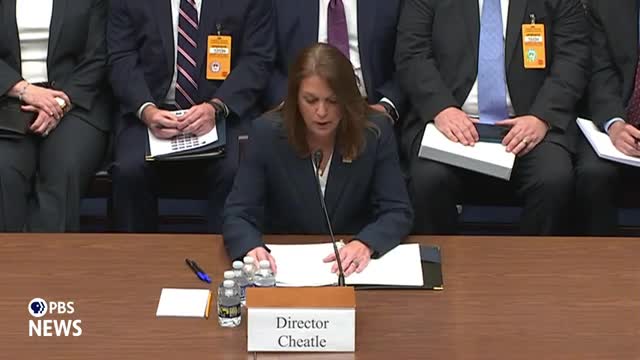Secret Service agents shield Trump during assassination attempt

This article was created by AI summarizing key points discussed. AI makes mistakes, so for full details and context, please refer to the video of the full meeting. Please report any errors so we can fix them. Report an error »

In a recent government meeting, officials discussed the harrowing events of July 13th, when former President Donald Trump was shielded by Secret Service agents during an assassination attempt. The agents displayed remarkable bravery, placing themselves in harm's way as shots were fired, and their actions were praised by leadership within the agency.
The head of the Secret Service highlighted the agency's commitment to transparency while acknowledging the limitations in sharing sensitive protective methodologies due to security risks. Since the beginning of 2024, the Secret Service has successfully secured over 75 sites, adapting their strategies to meet evolving threats. The agency employs multilayered security plans that integrate personnel, technical, and tactical assets to ensure comprehensive protection for high-profile individuals.
The official, who has nearly three decades of experience within the agency, detailed the collaborative planning process that involves coordination with local law enforcement and the protectee's staff. Security measures for the former president have been heightened in response to increasing threats, with a thorough assessment of venues conducted to identify vulnerabilities.
In the aftermath of the assassination attempt, the Secret Service activated its crisis center and mobilized additional protective resources for Trump. A reevaluation of the Republican National Convention's security plan was ordered, alongside an increase in security measures across the National Capital Region for all permanent protectees. Additionally, an internal investigation was initiated to ensure mission assurance within the agency.
These discussions underscore the ongoing challenges faced by the Secret Service in safeguarding public figures amid a complex and evolving threat landscape.
The head of the Secret Service highlighted the agency's commitment to transparency while acknowledging the limitations in sharing sensitive protective methodologies due to security risks. Since the beginning of 2024, the Secret Service has successfully secured over 75 sites, adapting their strategies to meet evolving threats. The agency employs multilayered security plans that integrate personnel, technical, and tactical assets to ensure comprehensive protection for high-profile individuals.
The official, who has nearly three decades of experience within the agency, detailed the collaborative planning process that involves coordination with local law enforcement and the protectee's staff. Security measures for the former president have been heightened in response to increasing threats, with a thorough assessment of venues conducted to identify vulnerabilities.
In the aftermath of the assassination attempt, the Secret Service activated its crisis center and mobilized additional protective resources for Trump. A reevaluation of the Republican National Convention's security plan was ordered, alongside an increase in security measures across the National Capital Region for all permanent protectees. Additionally, an internal investigation was initiated to ensure mission assurance within the agency.
These discussions underscore the ongoing challenges faced by the Secret Service in safeguarding public figures amid a complex and evolving threat landscape.
View full meeting
This article is based on a recent meeting—watch the full video and explore the complete transcript for deeper insights into the discussion.
View full meeting